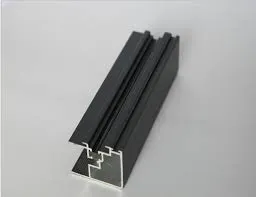Durable Solutions for Cast Iron Bushings in Industrial Applications and Machinery Enhancements
Understanding Cast Iron Bushings A Durable Solution for Engineering Needs
In the world of engineering and manufacturing, the choice of materials is critical to the performance, reliability, and longevity of components. One material that has stood the test of time is cast iron, particularly when it comes to bushings. Cast iron bushings play an essential role in various applications across industries such as automotive, machinery, and construction. In this article, we will explore the characteristics, benefits, applications, and maintenance of cast iron bushings.
What are Cast Iron Bushings?
Bushings are cylindrical linings used to reduce friction and wear between two moving parts, providing support and guidance. Cast iron bushings, specifically, are made from cast iron, a material known for its excellent mechanical properties and wear resistance. This material is produced by pouring molten iron into molds and allowing it to solidify. The result is a component that can withstand high levels of stress and strain, making it ideal for demanding applications.
Characteristics of Cast Iron Bushings
1. Durability Cast iron is inherently strong and can withstand extreme loads. This makes cast iron bushings suitable for heavy machinery and equipment that experience high-pressure conditions.
2. Wear Resistance The surface of cast iron bushings can be treated or formulated to enhance wear resistance, ensuring longevity even in abrasive environments.
3. Thermal Stability Cast iron has a high thermal conductivity, which allows it to dissipate heat effectively. This characteristic helps in maintaining performance in high-temperature applications.
4. Low Maintenance Due to their durability and wear-resistant properties, cast iron bushings require minimal maintenance over their operational life, making them a cost-effective choice in the long run.
Benefits of Using Cast Iron Bushings
1. Cost-Effectiveness While the initial cost of manufacturing cast iron bushings may be moderate, their longevity and durability significantly reduce the need for frequent replacements, ultimately lowering operational costs.
2. Versatility Cast iron bushings can be used in a variety of applications, from automotive engines to industrial machinery. Their adaptability makes them a go-to choice in various sectors.
cast iron bushings

4. Ease of Installation Cast iron bushings are generally easy to install, and many designs allow for quick replacements, further enhancing productivity in maintenance operations.
Applications of Cast Iron Bushings
Cast iron bushings are utilized in numerous industries, showcasing their versatility. Some common applications include
- Automotive Industry In vehicles, cast iron bushings are often used in suspension systems and engine components, where they help in reducing vibration and wear.
- Manufacturing Machinery These bushings are frequently found in conveyor systems, gearboxes, and other machinery where they support rotating shafts and components.
- Construction Equipment Heavy machinery, such as excavators and bulldozers, often employs cast iron bushings in their hydraulic systems to ensure smooth operation under stress.
- Pumps and Compressors In pumps and compressors, cast iron bushings provide support for moving parts, helping to maintain efficiency and reliability.
Maintenance of Cast Iron Bushings
While cast iron bushings are low-maintenance, regular inspections should be performed to check for signs of wear or damage. Lubrication is essential to ensure minimal friction between moving parts, and keeping the bushings clean from debris can extend their operational life. If any signs of excessive wear or degradation are observed, it may be necessary to replace the bushings to avoid catastrophic failures in the machinery.
Conclusion
Cast iron bushings represent a robust solution for numerous engineering challenges. Their durability, wear resistance, and versatility make them an indispensable component in various applications. By understanding their characteristics and benefits, manufacturers can leverage cast iron bushings to enhance the performance and reliability of their systems, ultimately leading to increased efficiency and reduced costs in operations. As technology continues to evolve, the importance of such essential components remains pivotal in the pursuit of innovation and quality in engineering practices.
-
Wrought Iron Components: Timeless Elegance and Structural StrengthNewsJul.28,2025
-
Window Hardware Essentials: Rollers, Handles, and Locking SolutionsNewsJul.28,2025
-
Small Agricultural Processing Machines: Corn Threshers, Cassava Chippers, Grain Peelers & Chaff CuttersNewsJul.28,2025
-
Sliding Rollers: Smooth, Silent, and Built to LastNewsJul.28,2025
-
Cast Iron Stoves: Timeless Heating with Modern EfficiencyNewsJul.28,2025
-
Cast Iron Pipe and Fitting: Durable, Fire-Resistant Solutions for Plumbing and DrainageNewsJul.28,2025
-
 Wrought Iron Components: Timeless Elegance and Structural StrengthJul-28-2025Wrought Iron Components: Timeless Elegance and Structural Strength
Wrought Iron Components: Timeless Elegance and Structural StrengthJul-28-2025Wrought Iron Components: Timeless Elegance and Structural Strength -
 Window Hardware Essentials: Rollers, Handles, and Locking SolutionsJul-28-2025Window Hardware Essentials: Rollers, Handles, and Locking Solutions
Window Hardware Essentials: Rollers, Handles, and Locking SolutionsJul-28-2025Window Hardware Essentials: Rollers, Handles, and Locking Solutions -
 Small Agricultural Processing Machines: Corn Threshers, Cassava Chippers, Grain Peelers & Chaff CuttersJul-28-2025Small Agricultural Processing Machines: Corn Threshers, Cassava Chippers, Grain Peelers & Chaff Cutters
Small Agricultural Processing Machines: Corn Threshers, Cassava Chippers, Grain Peelers & Chaff CuttersJul-28-2025Small Agricultural Processing Machines: Corn Threshers, Cassava Chippers, Grain Peelers & Chaff Cutters












